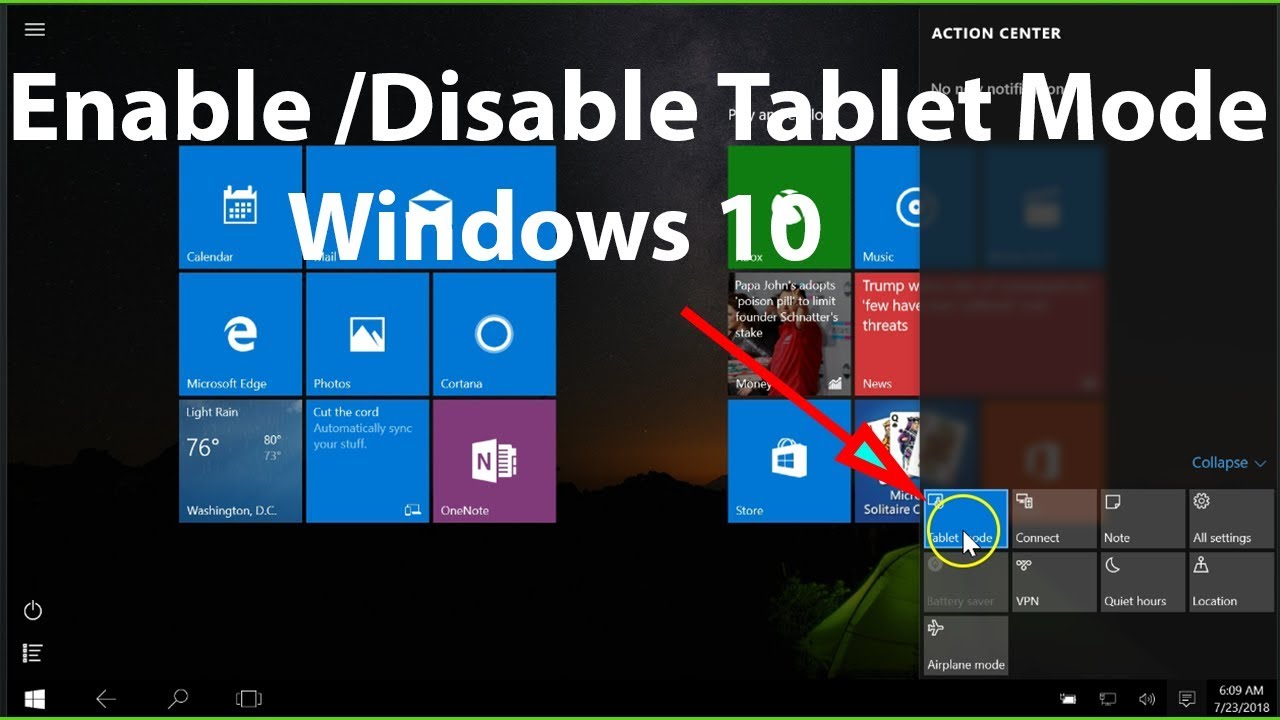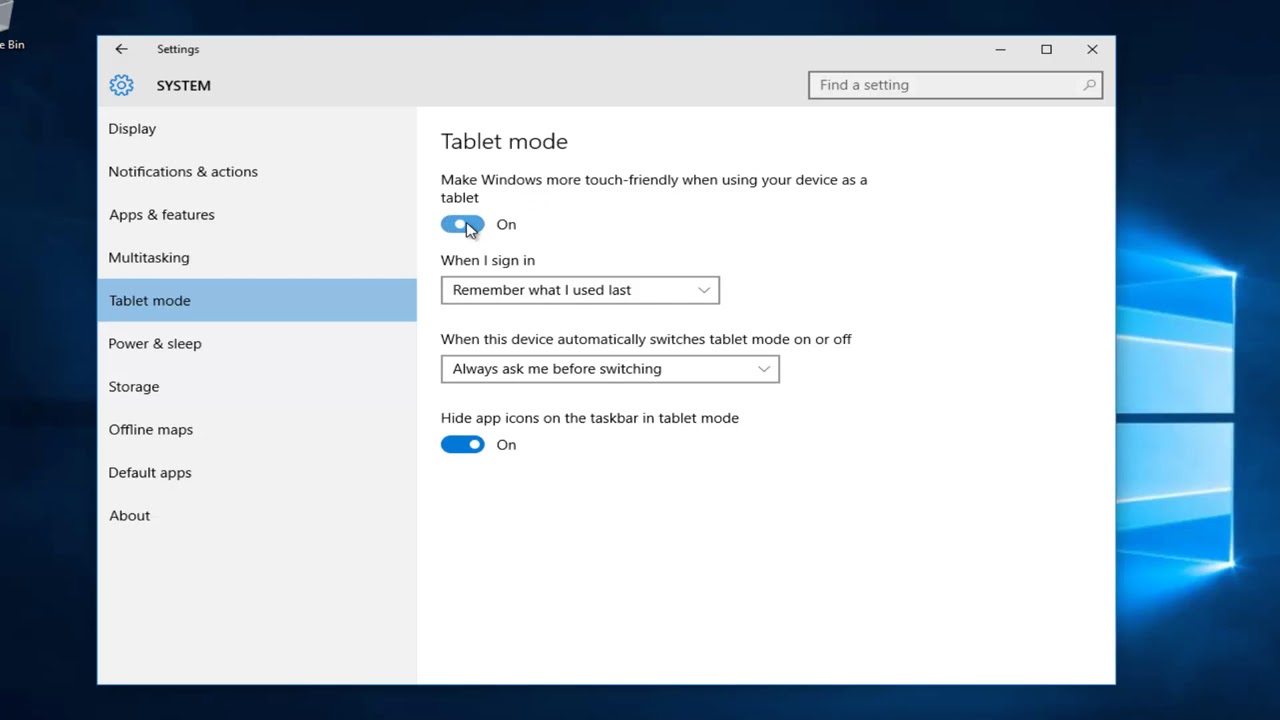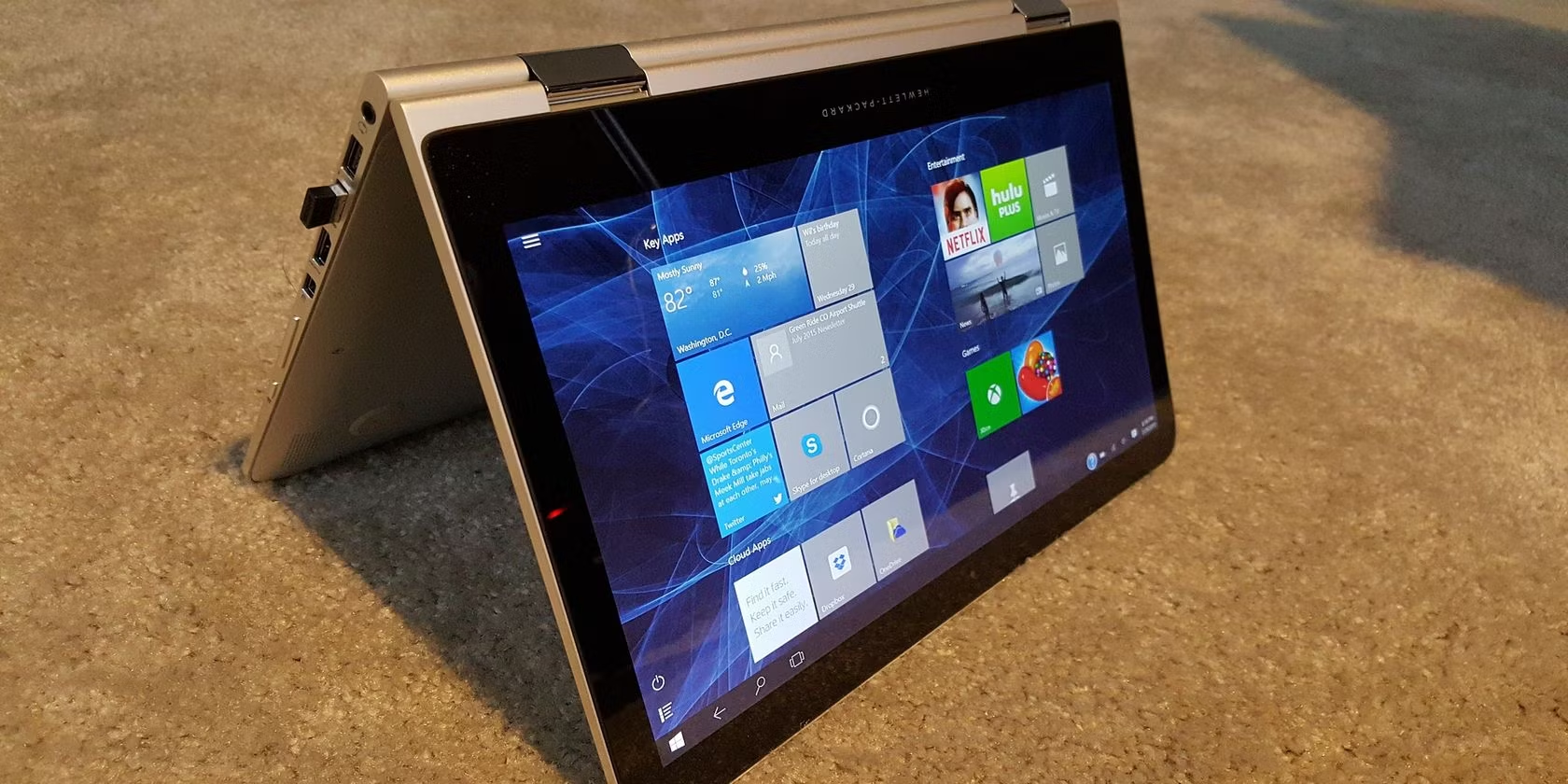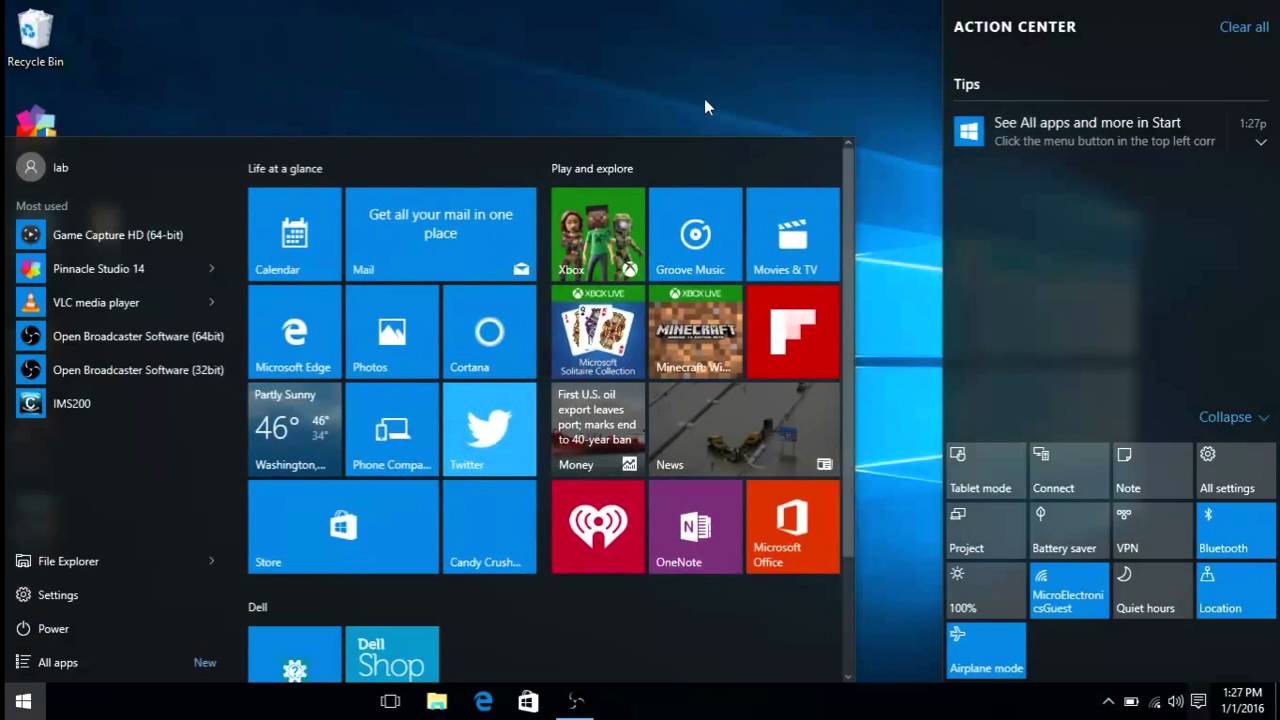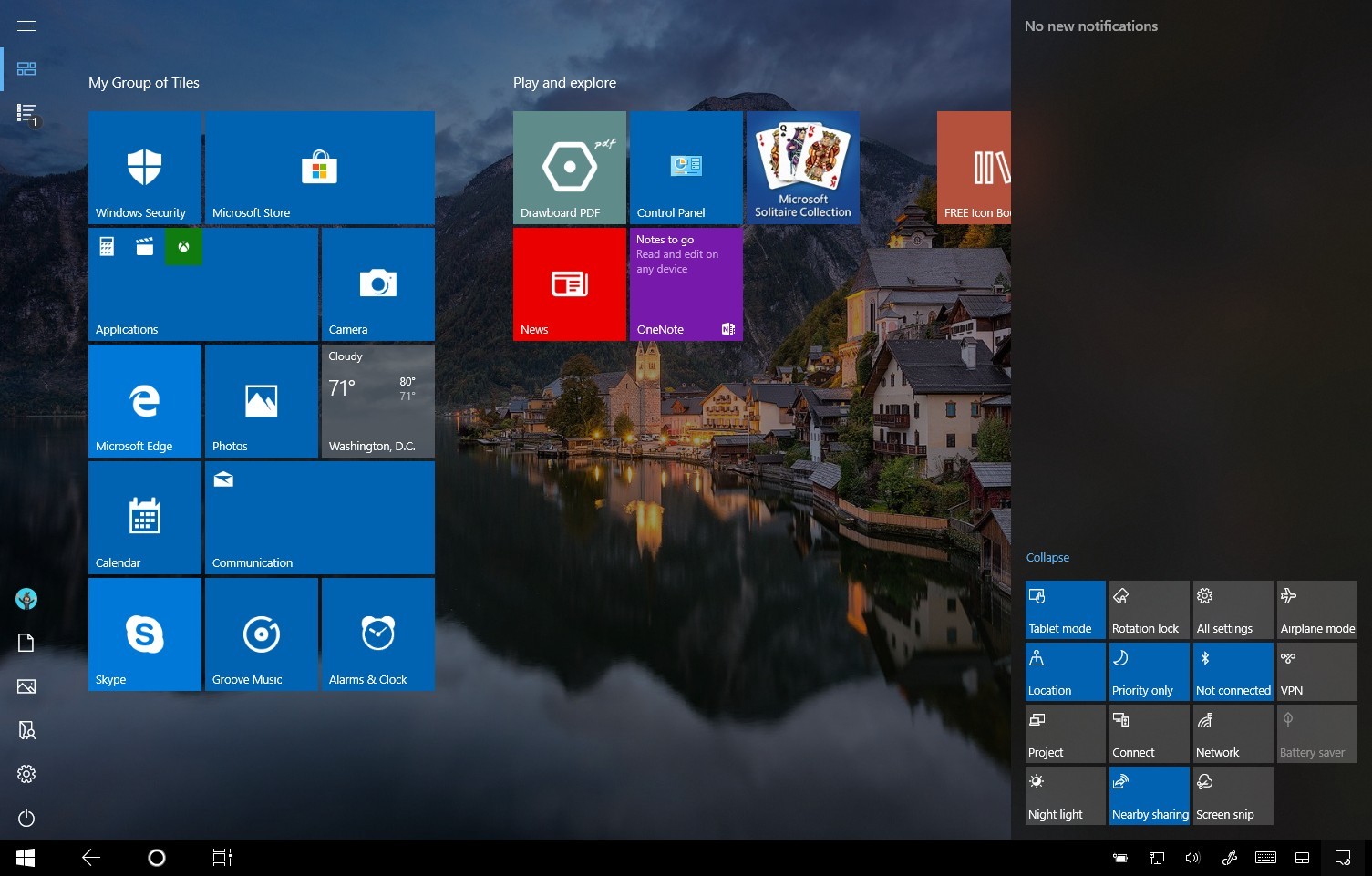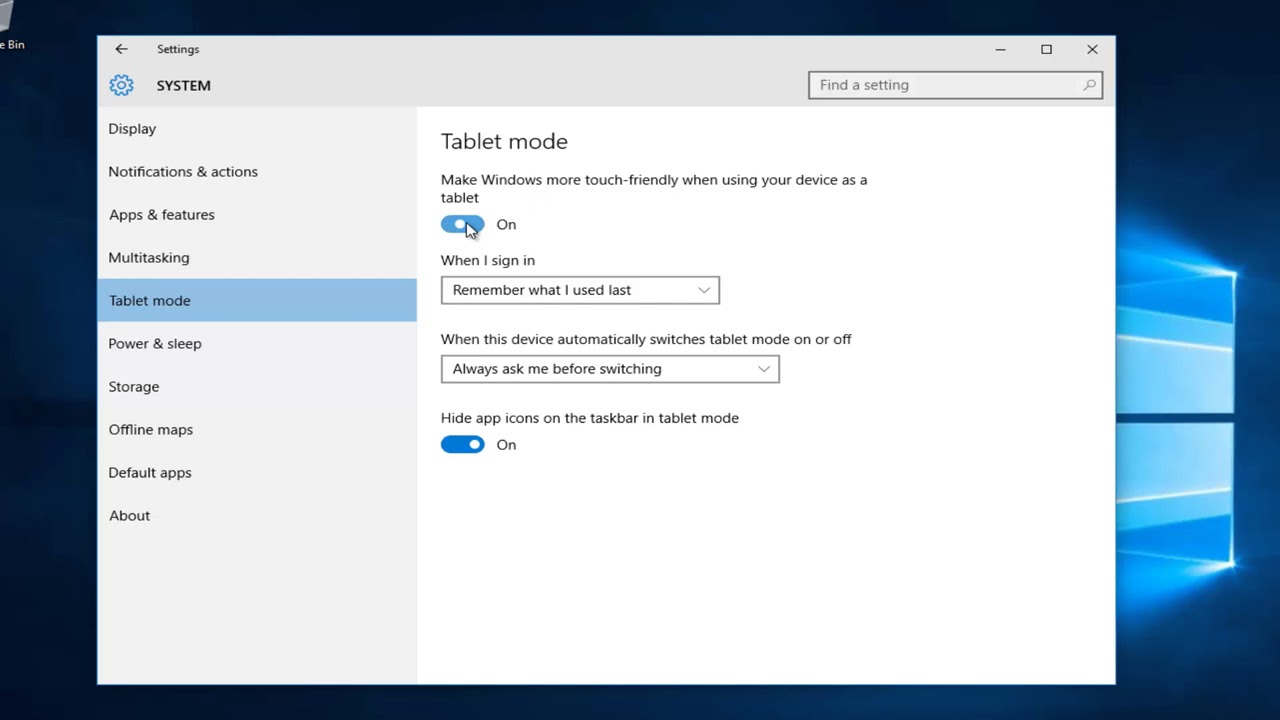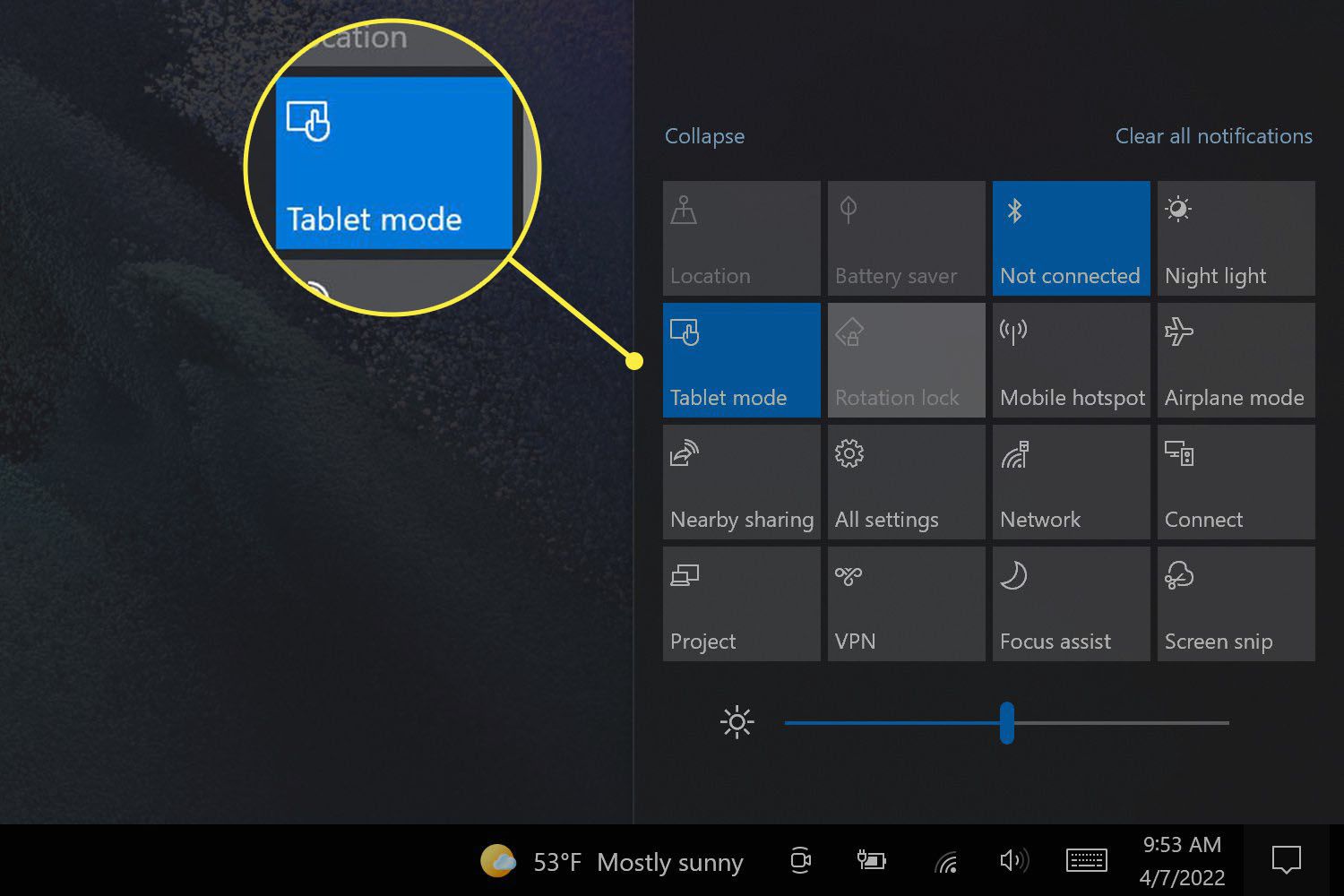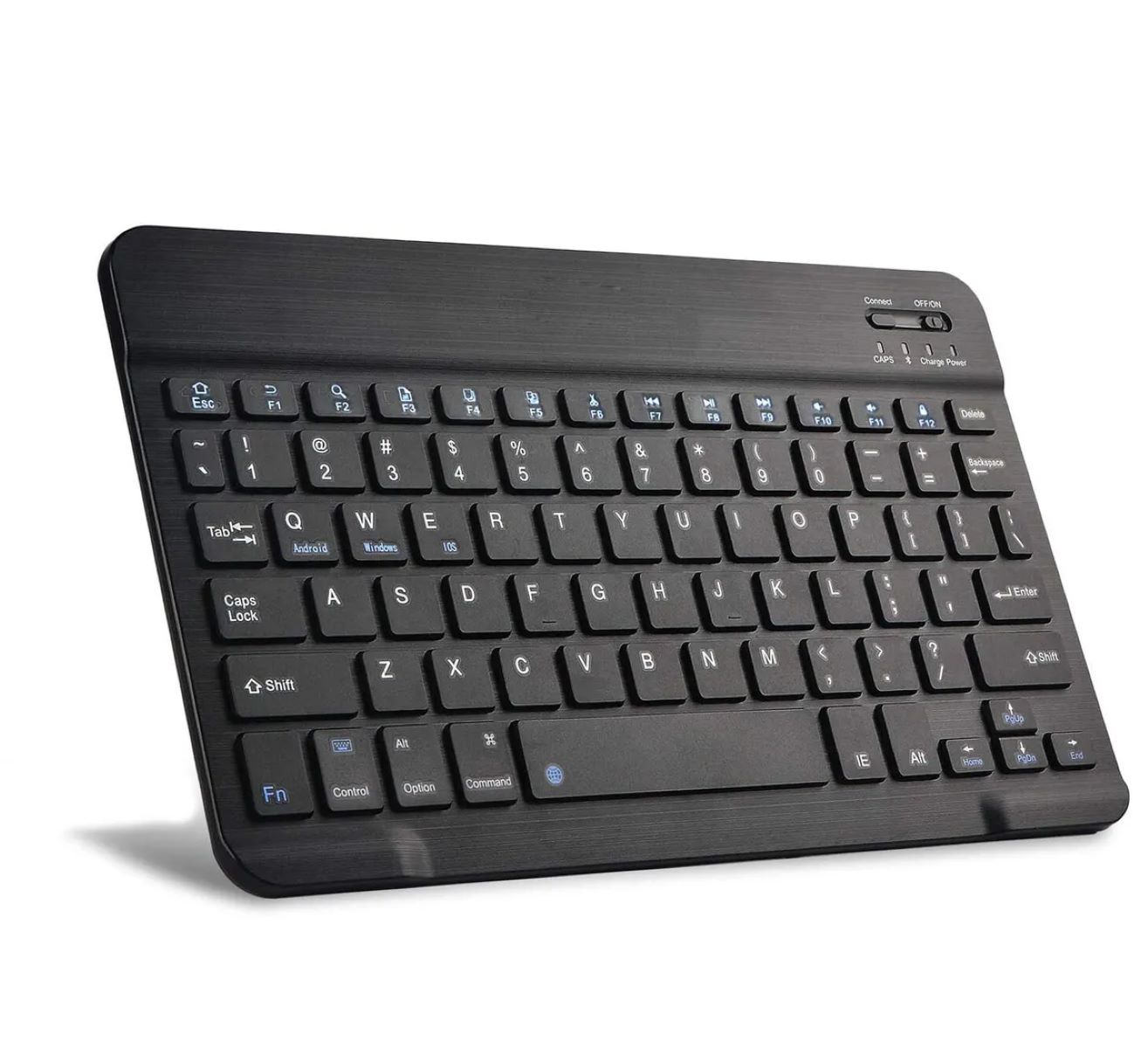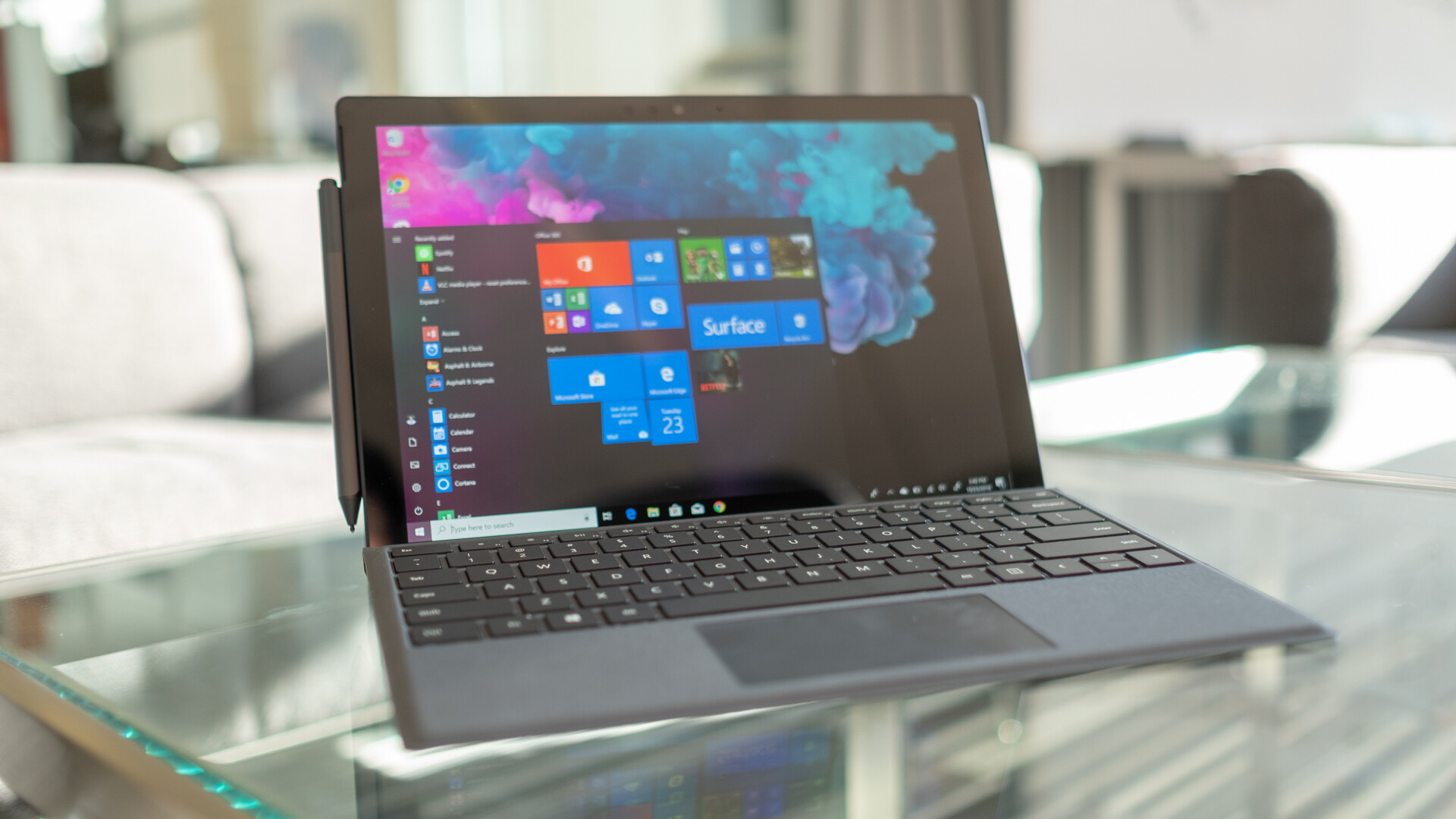Introduction
Windows 10 offers a versatile operating system experience with its tablet mode. Tablet mode is designed to optimize the user interface for touch screens, allowing for a seamless tablet-like experience on devices that support touch input. This mode alters the layout of the Start menu, Taskbar, and other features to provide a more touch-friendly interface.
While tablet mode offers great convenience and usability for devices such as tablets, 2-in-1 laptops, and touch-enabled PCs, there may be instances when you want to switch out of tablet mode and return to the traditional desktop interface. This could be for various reasons, such as using applications that are better suited for the traditional desktop environment or if you simply prefer the desktop layout.
In this article, we will explore different methods to switch Windows 10 out of tablet mode and return to the desktop interface. Whether you’re new to Windows 10 or a seasoned user, these methods will help you quickly and easily transition back to the desktop environment.
What is tablet mode in Windows 10?
Tablet mode is a feature in Windows 10 that optimizes the user interface for touch screens. When tablet mode is enabled, the operating system modifies the layout and behavior of various elements to provide a more touch-friendly experience.
In tablet mode, the Start menu is expanded to occupy the entire screen, providing larger tiles and easier access to apps. The Taskbar is also optimized, with icons and controls that are spaced out for touch input. The virtual keyboard is automatically enabled, making it convenient to input text using the touchscreen.
With tablet mode, you can navigate through the operating system using touch gestures such as swiping from the sides for the Action Center and app switcher, or swiping up from the bottom to reveal the Taskbar. These gestures make it intuitive to interact with your device, especially on tablets or convertible laptops with touchscreens.
Tablet mode also enhances the user experience for apps that are designed specifically for touch input. These apps, commonly referred to as “Universal Windows Platform” (UWP) apps, are available through the Microsoft Store and offer a more immersive and responsive touch interface.
Additionally, tablet mode provides a convenient way to use Windows Ink, a feature that allows you to draw or write directly on the screen using a stylus or your finger. This is particularly useful for tasks such as taking notes, sketching, or marking up documents.
Whether you’re using a tablet, a 2-in-1 device, or a touch-enabled PC, tablet mode in Windows 10 offers a versatile and intuitive interface for touch input. However, there may be times when you want to switch out of tablet mode and return to the traditional desktop environment, and we’ll explore how to do that in the following sections.
Reasons to switch out of tablet mode
Although tablet mode in Windows 10 is designed to enhance the touch experience, there are several reasons why you might want to switch out of tablet mode and return to the traditional desktop interface:
- Using traditional desktop applications: While tablet mode is optimized for touch-centric apps, some applications may be better suited for the traditional desktop environment. This could include resource-intensive software, professional applications, or older legacy programs that may not have been designed with touch input in mind.
- Multi-tasking and window management: The traditional desktop interface offers more flexibility and robustness when it comes to multi-tasking and managing multiple windows simultaneously. Switching out of tablet mode allows you to have multiple windows open, arrange them side by side, and easily switch between them using the Taskbar or keyboard shortcuts.
- Productivity and efficiency: For users who are more accustomed to the desktop experience, switching out of tablet mode can improve productivity and efficiency. The traditional desktop interface provides access to a wider range of features, customization options, and keyboard shortcuts, making it easier to navigate and utilize the full capabilities of the operating system.
- Improved precision in input: While touch input is intuitive and convenient for certain tasks, there are instances where precise input is required. The traditional desktop environment allows for the use of a mouse or trackpad, enabling more accurate cursor control and precise selection of elements such as text, icons, and buttons.
- Compatibility with peripherals: Switching out of tablet mode can be necessary when using peripherals that require a traditional desktop interface. This includes devices such as external monitors, printers, and scanners, which may not be fully compatible or optimized for touch input.
- Familiarity and personal preference: Some users simply prefer the familiarity and comfort of the traditional desktop interface. If you have been using Windows for a long time or are more comfortable navigating through the desktop environment, switching out of tablet mode allows you to work in a way that suits your personal preferences and habits.
By switching out of tablet mode, you can enjoy the advantages and capabilities of the traditional desktop interface in Windows 10, catering to your specific needs and preferences.
Method 1: Using Action Center
The Action Center in Windows 10 provides quick access to various system settings and notifications. It also offers a convenient way to switch out of tablet mode. Here’s how:
- Click on the Action Center icon located in the bottom right corner of the Taskbar. You can also use the keyboard shortcut Windows key + A to open the Action Center.
- In the Action Center, you’ll see a range of quick settings icons at the bottom. Look for the “Tablet mode” icon, which looks like a square with a pen in the lower-right corner.
- Click or tap on the “Tablet mode” icon once to toggle it on or off. When the icon is highlighted, it means tablet mode is enabled. When it is not highlighted, tablet mode is disabled, and you are in the traditional desktop interface.
- After toggling the “Tablet mode” icon, Windows 10 will switch to the appropriate mode based on your selection, giving you the desired interface.
By using the Action Center, you can easily switch between tablet mode and the traditional desktop interface with just a few clicks or taps.
Method 2: Using Settings
Another way to switch out of tablet mode in Windows 10 is by using the Settings app. Follow these steps to change the mode:
- Open the Settings app by clicking on the Start menu and selecting the “Settings” cog icon. You can also use the keyboard shortcut Windows key + I.
- In the Settings app, click on the “System” category.
- In the left sidebar, select “Tablet” from the list of options.
- On the right side, under the “When I sign in” section, you will find the “Make Windows more touch-friendly…” option with a drop-down menu.
- Click on the drop-down menu and select “Use desktop mode” to disable tablet mode. Alternatively, you can choose “Use tablet mode” to enable it.
Once you’ve made your selection, Windows 10 will automatically switch to the chosen mode.
The Settings app provides a more comprehensive interface to adjust various system settings in Windows 10. By using this method, you have more control over the tablet mode switch, allowing you to customize your device’s behavior according to your preferences.
Method 3: Using Tablet Mode settings in Notification Center
In addition to the Action Center and Settings app, Windows 10 also offers a quick way to switch out of tablet mode using the Tablet Mode settings in the Notification Center. Here’s how:
- Click on the Notification Center icon in the bottom right corner of the Taskbar. You can also use the keyboard shortcut Windows key + A to open the Action Center and access the Notification Center.
- In the Notification Center, look for the “Tablet mode” tile. It should be located near the bottom of the panel.
- Click or tap on the “Tablet mode” tile to toggle it on or off. When the tile is highlighted, it indicates that tablet mode is enabled. When it is not highlighted, tablet mode is disabled, and you are in the traditional desktop interface.
- Once you’ve toggled the “Tablet mode” tile, Windows 10 will instantly switch to the desired mode, giving you immediate access to the chosen interface.
By utilizing the Tablet Mode settings in the Notification Center, you can easily switch between tablet mode and the traditional desktop interface without having to open additional menus or apps.
Method 4: Using Keyboard Shortcut
If you prefer using keyboard shortcuts, Windows 10 provides a quick and efficient way to switch out of tablet mode using a simple key combination. Here’s how:
- Press the Windows key on your keyboard to open the Start menu or bring the Start screen into focus, depending on your configuration.
- Simultaneously press the “A” key on your keyboard while holding down the Windows key. This keyboard shortcut, Windows key + A, will open the Action Center.
- Once the Action Center is open, navigate to the “Tablet mode” icon using the arrow keys or by pressing the “T” key until it is selected.
- Press the “Enter” key on your keyboard to toggle the tablet mode on or off. If the icon is highlighted, it means tablet mode is enabled. If it is not highlighted, tablet mode is disabled, and you are in the traditional desktop interface.
With the help of the Windows key + A keyboard shortcut, you can quickly access the Action Center and toggle tablet mode on or off, providing a fast and efficient way to switch between the two modes.
Method 5: Using the Start Menu
The Start menu in Windows 10 provides another simple method to switch out of tablet mode. By accessing the Start menu, you can change the mode with just a few clicks. Here’s how:
- Click on the Start button located in the bottom left corner of the Taskbar, or press the Windows key on your keyboard to open the Start menu.
- Once the Start menu is open, locate the “Settings” icon, which looks like a gear. It is typically located above the Power button.
- Click on the “Settings” icon to open the Settings app.
- In the Settings app, select “System” from the available options.
- In the left sidebar, choose “Tablet” from the list.
- On the right side, under the “When I sign in” section, you will find the “Make Windows more touch-friendly…” option with a drop-down menu.
- Click on the drop-down menu and select “Use desktop mode” to disable tablet mode. Alternatively, you can choose “Use tablet mode” to enable it.
After making the selection, Windows 10 will switch to the mode you have chosen, allowing you to seamlessly transition between tablet mode and the traditional desktop interface.
By utilizing the Start menu to access the Settings app, you have a straightforward way to change the mode with just a few clicks, providing flexibility in adapting to your desired interface.
Conclusion
Switching Windows 10 out of tablet mode and returning to the traditional desktop interface is a simple and straightforward process. Whether you prefer using the Action Center, the Settings app, the Tablet Mode settings in the Notification Center, keyboard shortcuts, or the Start menu, there are various methods to choose from.
Tablet mode in Windows 10 offers a touch-friendly interface that is optimized for devices with touchscreens, providing a seamless and intuitive user experience. However, there are several reasons why you might want to switch out of tablet mode. This could include using traditional desktop applications, improving multi-tasking and window management, increasing productivity and efficiency, enabling improved precision in input, ensuring compatibility with peripherals, or simply due to personal preference and familiarity with the traditional desktop interface.
By following the methods outlined in this article, you can easily switch between tablet mode and the traditional desktop interface based on your needs and preferences. Whether you use the Action Center, the Settings app, the Tablet Mode settings in the Notification Center, keyboard shortcuts, or the Start menu, these methods provide convenient ways to toggle tablet mode on or off, allowing you to seamlessly transition between touch-centric and desktop environments.
Remember, Windows 10 is designed to be flexible and adaptable to your specific preferences and requirements. Experiment with these methods and find the one that works best for you. By utilizing the right mode for the right tasks, you can maximize your productivity and enjoy a personalized computing experience on your Windows 10 device.







